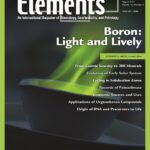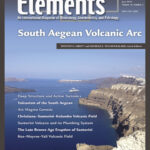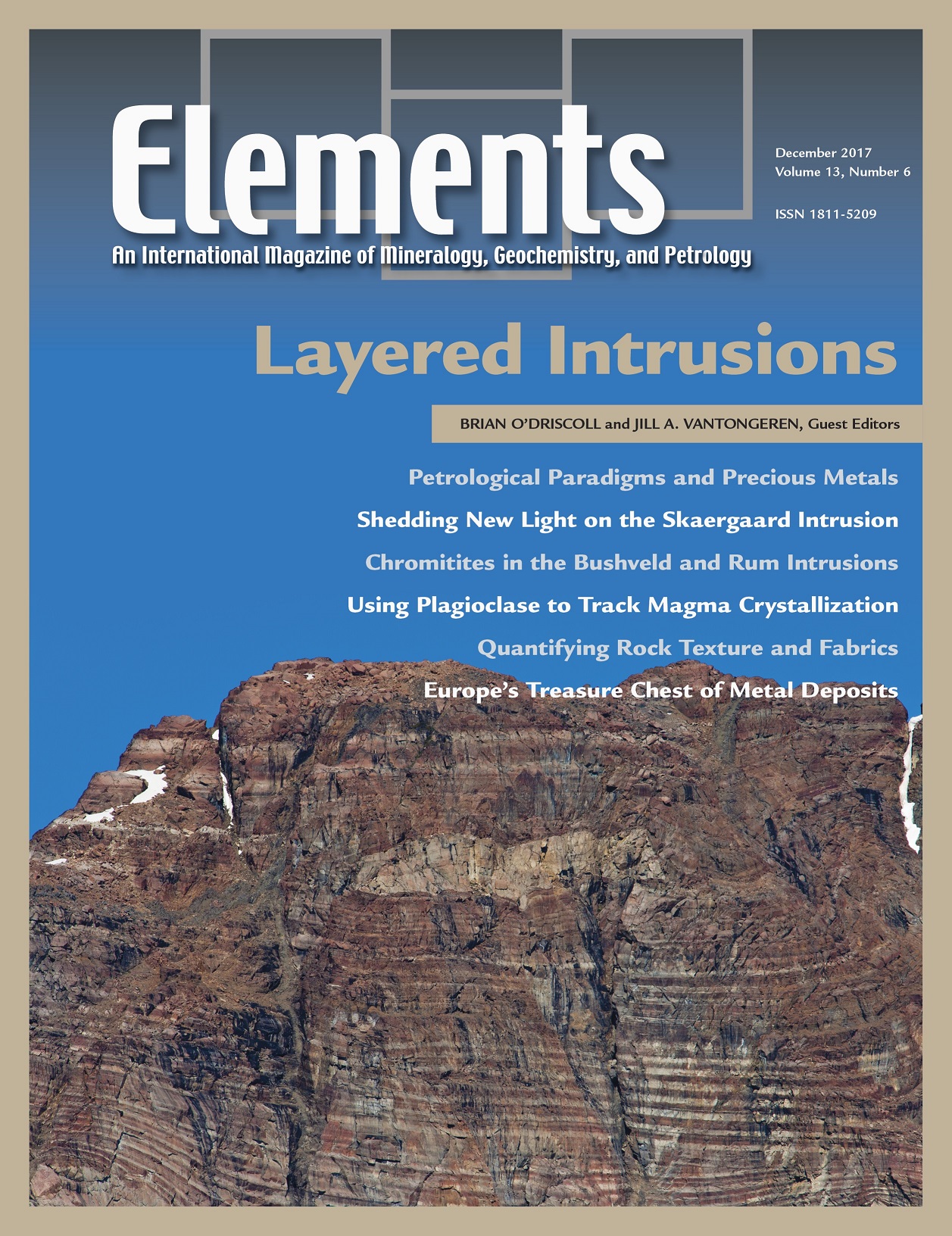
Boron: Light And Lively, August 2017, Vol. 13, No. 4
June 28, 2024
South Aegean Volcanic Arc, June 2019, Vol. 15, No. 3
June 28, 2024Layered Intrusions, December 2017, Vol. 13, No. 6
$20.00
For more than 50 years, layered mafic-ultramafic intrusions have served as natural laboratories for studying magma chamber processes and magmatic differentiation. Further enhancing our understanding of layered intrusion formation will yield valuable insights into the solidification of magmatic systems, the formation of precious metal deposits, and the timescales over which substantial crust-forming episodes occur.
Layered Intrusions
December 2017, Vol. 13, No. 6
For more than 50 years, layered mafic-ultramafic intrusions have served as natural laboratories for studying magma chamber processes and magmatic differentiation. Further enhancing our understanding of layered intrusion formation will yield valuable insights into the solidification of magmatic systems, the formation of precious metal deposits, and the timescales over which substantial crust-forming episodes occur. The aims of this issue of Elements are to offer an overview of the state-of-the-art in the petrology of layered intrusions today and a look forward to the future challenges in the field.
Why You’ll Love Elements Magazine:
- Expert Contributors: Articles written by renowned researchers in the field of geoscience.
- Engaging Content: Join a community of readers who are passionate about Elements.
- Exceptional Quality: Each issue is printed on high-quality paper with stunning visuals and detailed illustrations that bring complex scientific concepts to life.
Order your copy of the December 2017 issue of Elements magazine today and delve into layered intrusions.
Related products
-
Medical Mineralogy And Geochemistry, December 2007, Vol. 3, No. 6
$20.00Medical mineralogy and geochemistry is an emergent, highly interdisciplinary field concerned with both normal and pathological interactions between minerals or amorphous inorganic solids and biomolecules or cells within the human body, and the transport and fate of prions and protein toxins in the soil environment. Prior research has, appropriately, focused on the complex genetic and molecular biological aspects, but there is a growing recognition of the vital need for understanding the surface and bulk properties and reactivities, especially at the challenging nanoscale characteristic of biomacromolecules and biominerals.
-
Carbon Dioxide Sequestration, October 2008, Vol. 4, No. 5
$20.00Storage of carbon in the subsurface involves introduction of supercritical CO2 into rock formations beneath the surface of the Earth, typically at depths of 1000 to 4000 meters. Although CO2 is a relatively benign substance, the volume being considered is large.
-
Zircon – Tiny But Timely, February 2007, Vol. 3, No. 1
$20.00Where would Earth science be without zircon? As Earth’s timekeeper, zircon has proven to be a remarkable and versatile mineral, providing insights into deep time and ancient Earth processes. However, there is still much to learn about Earth’s history from zircon and its behaviour.




